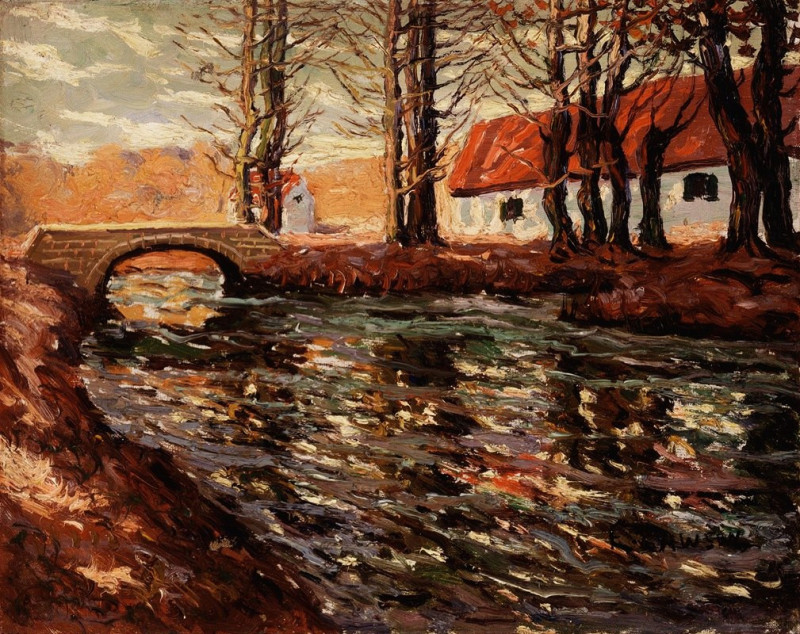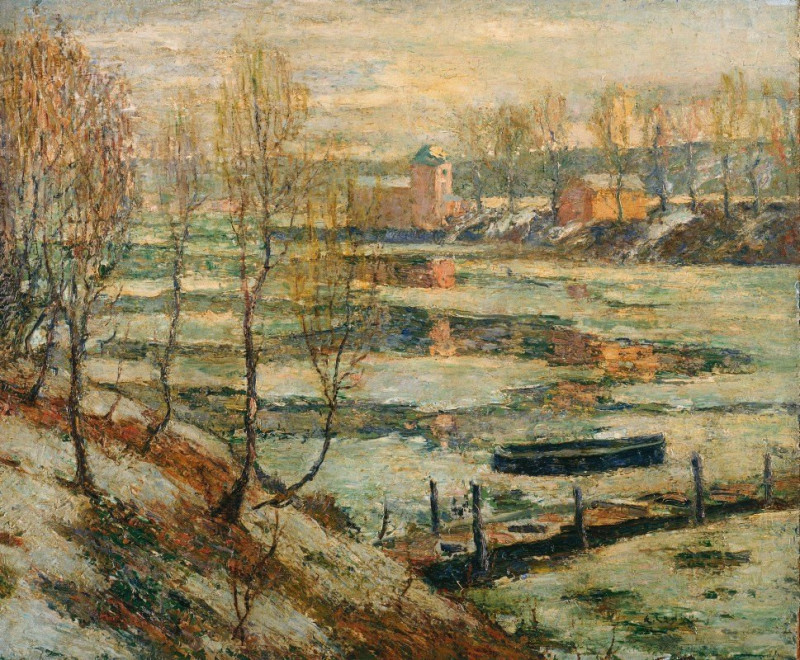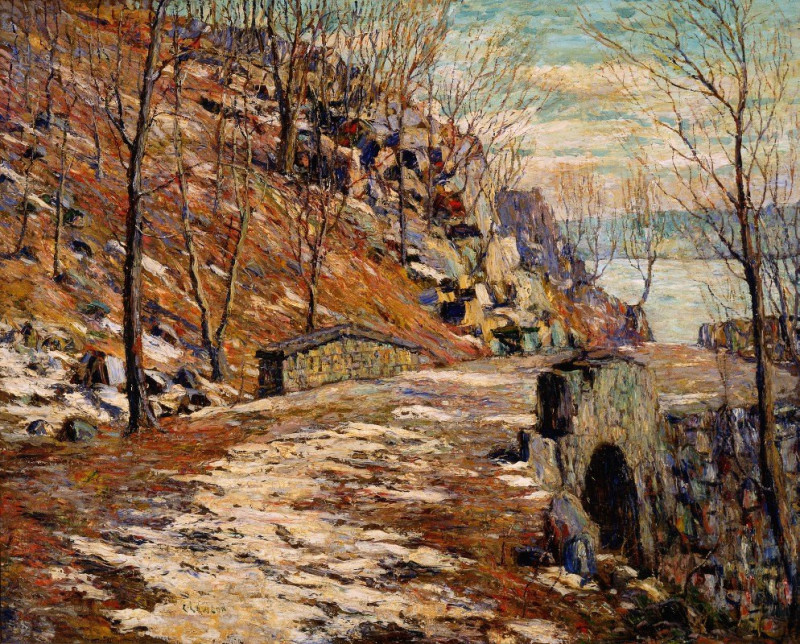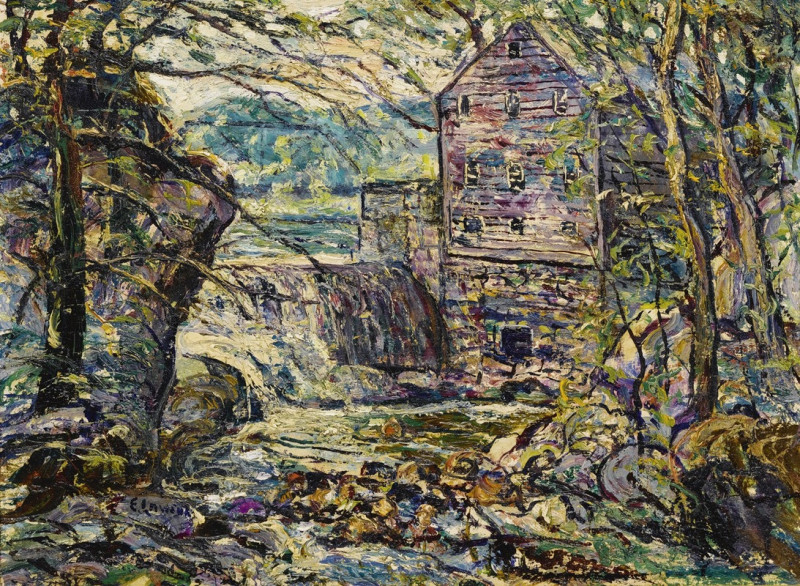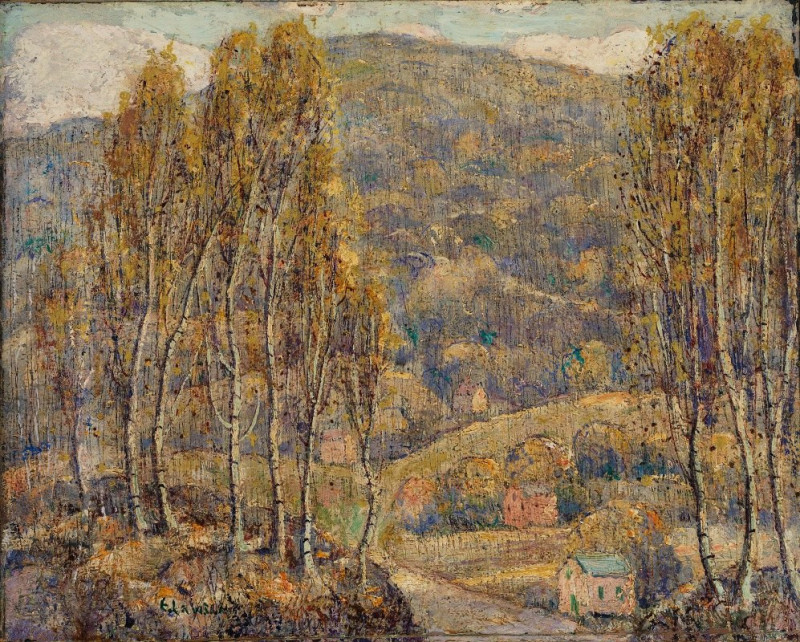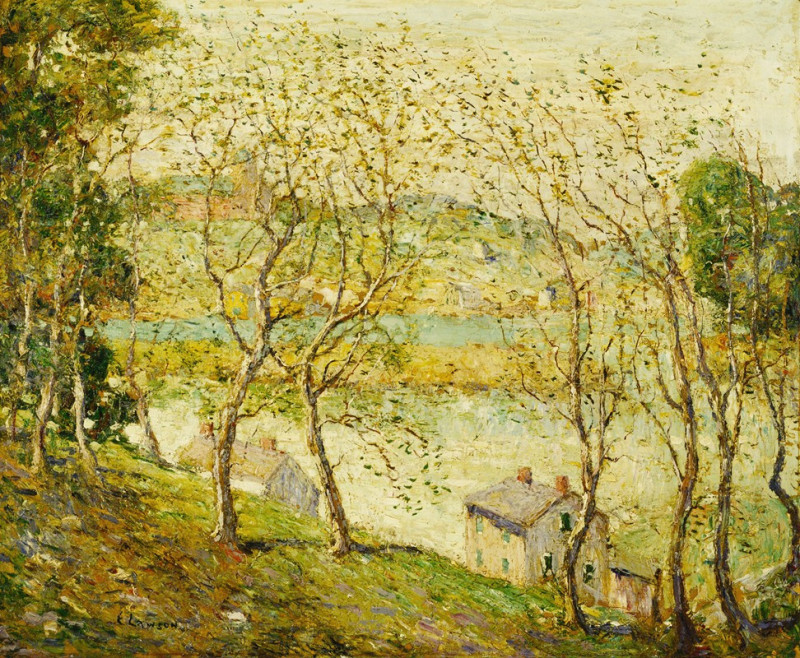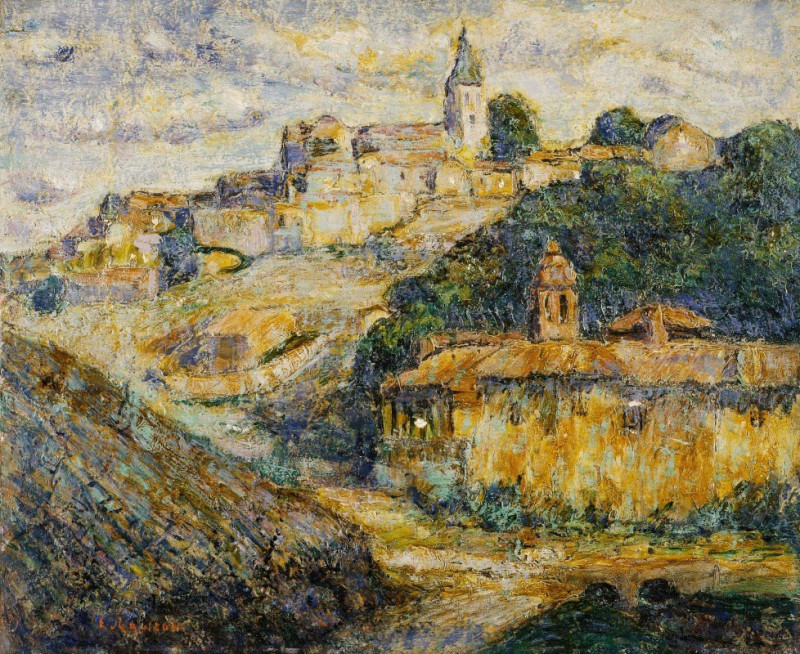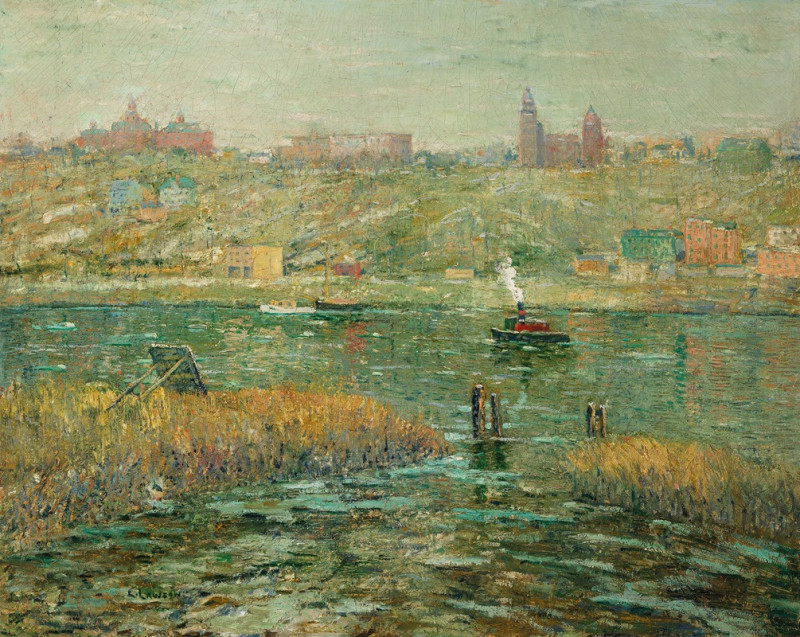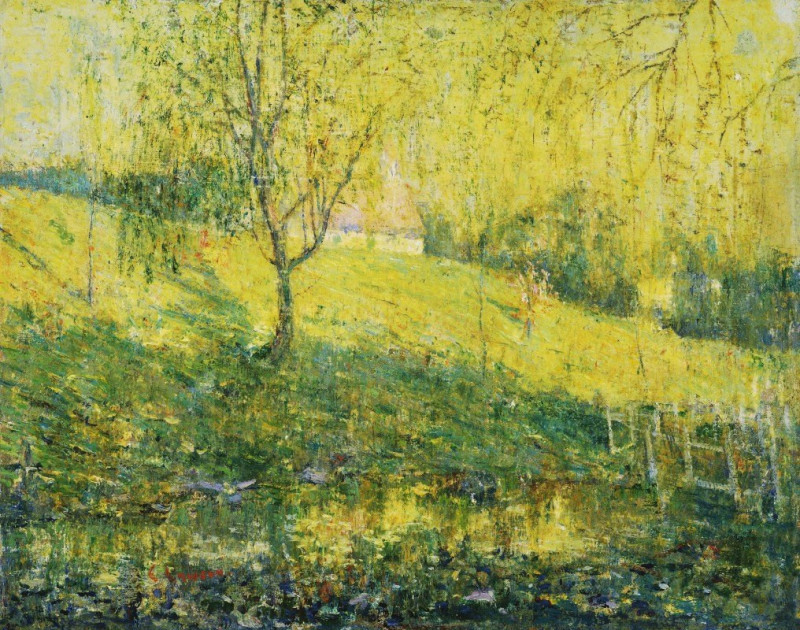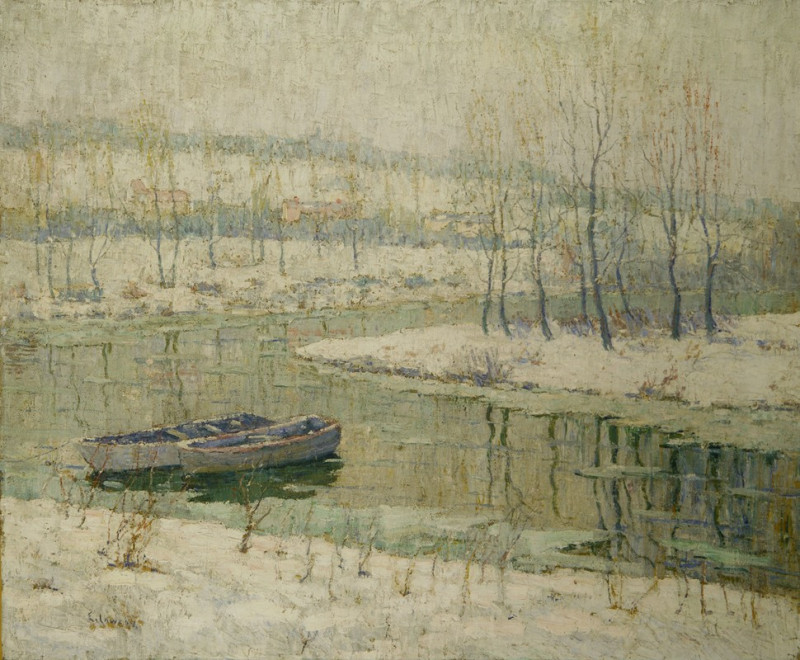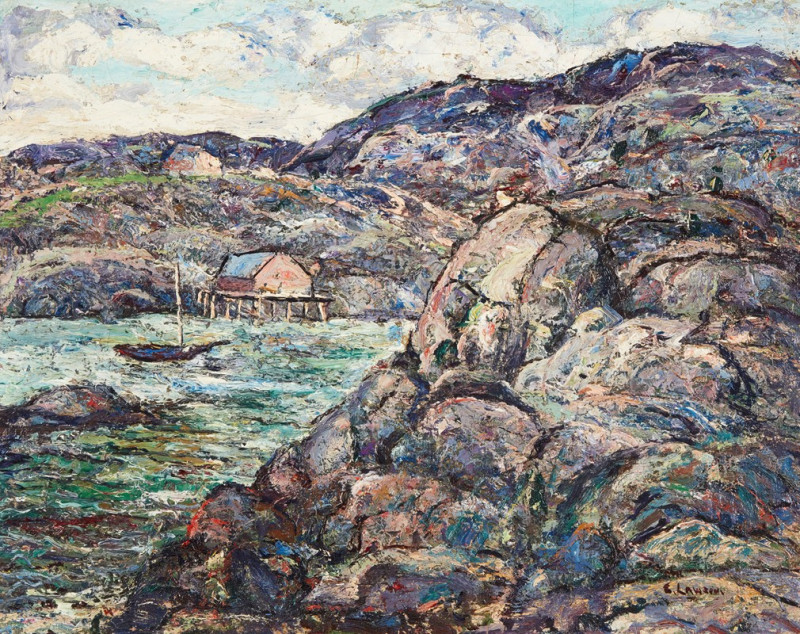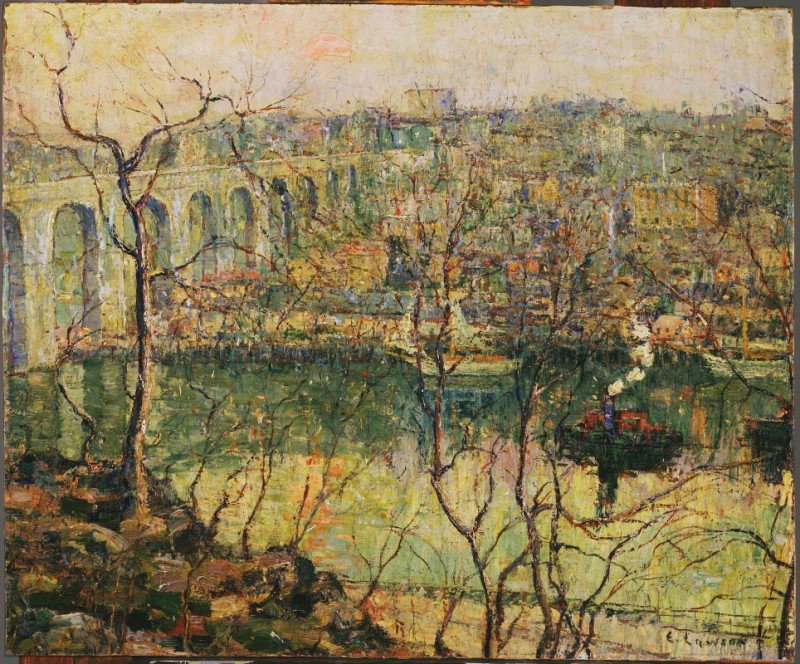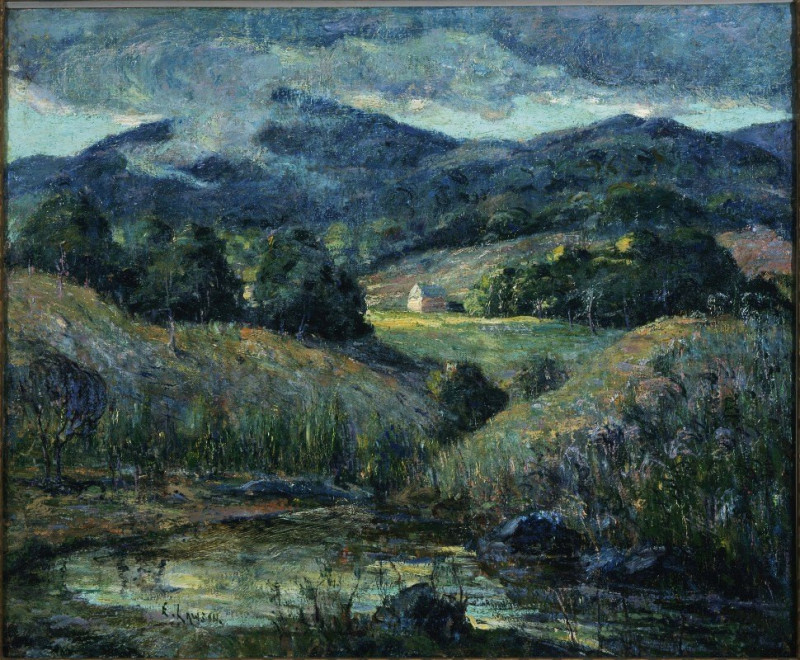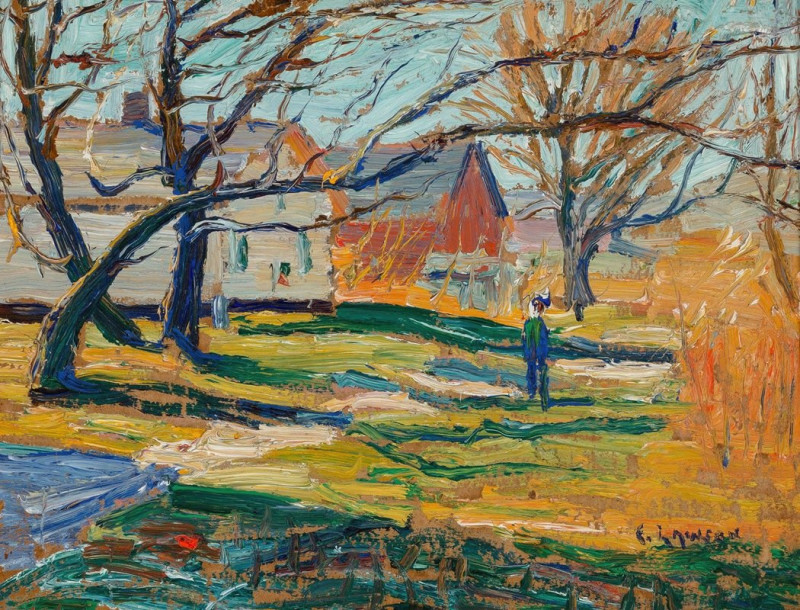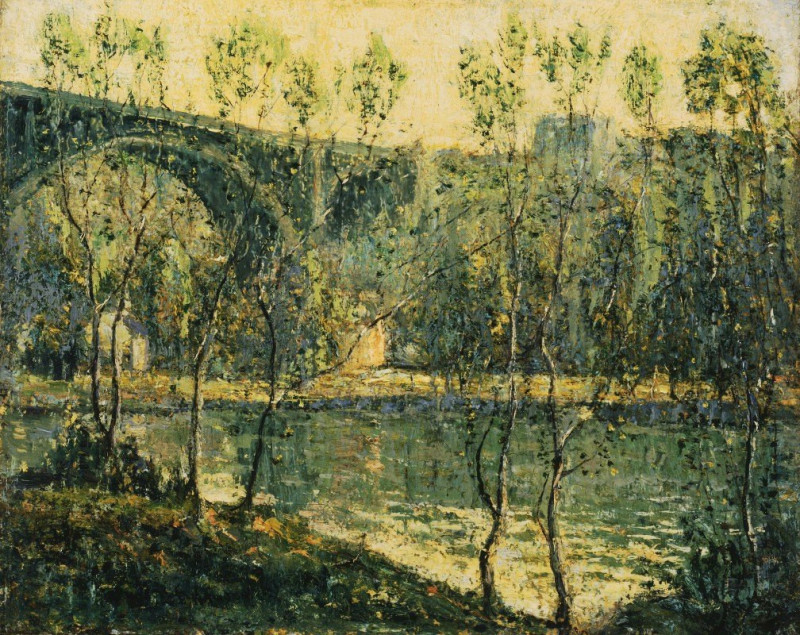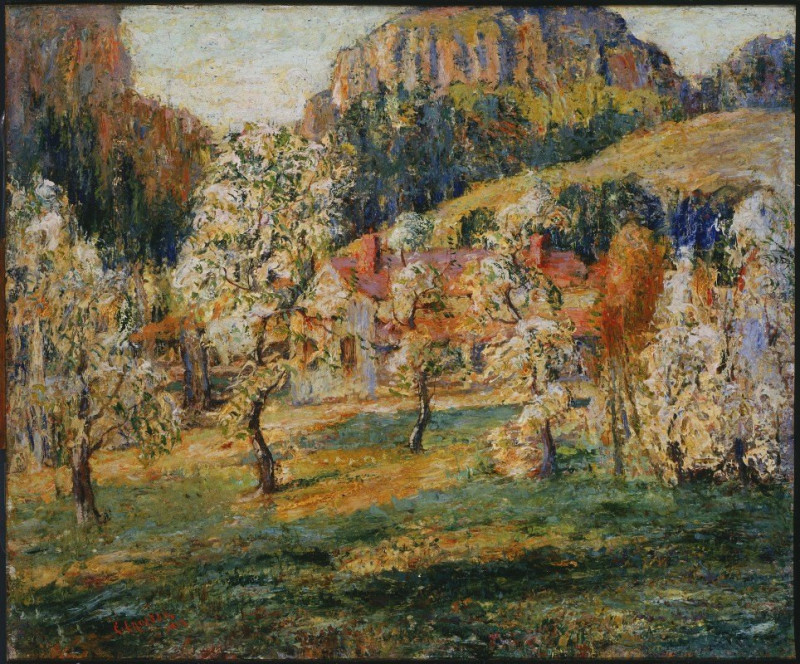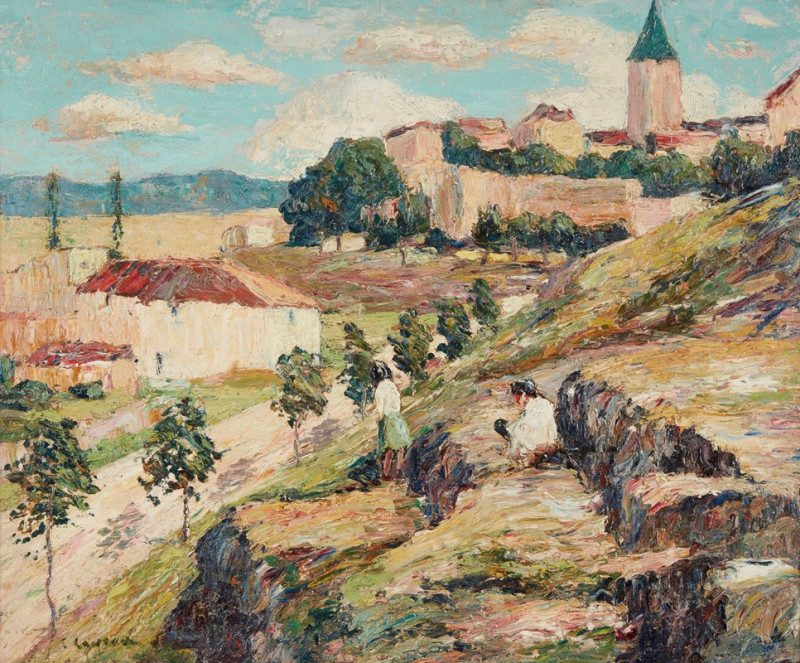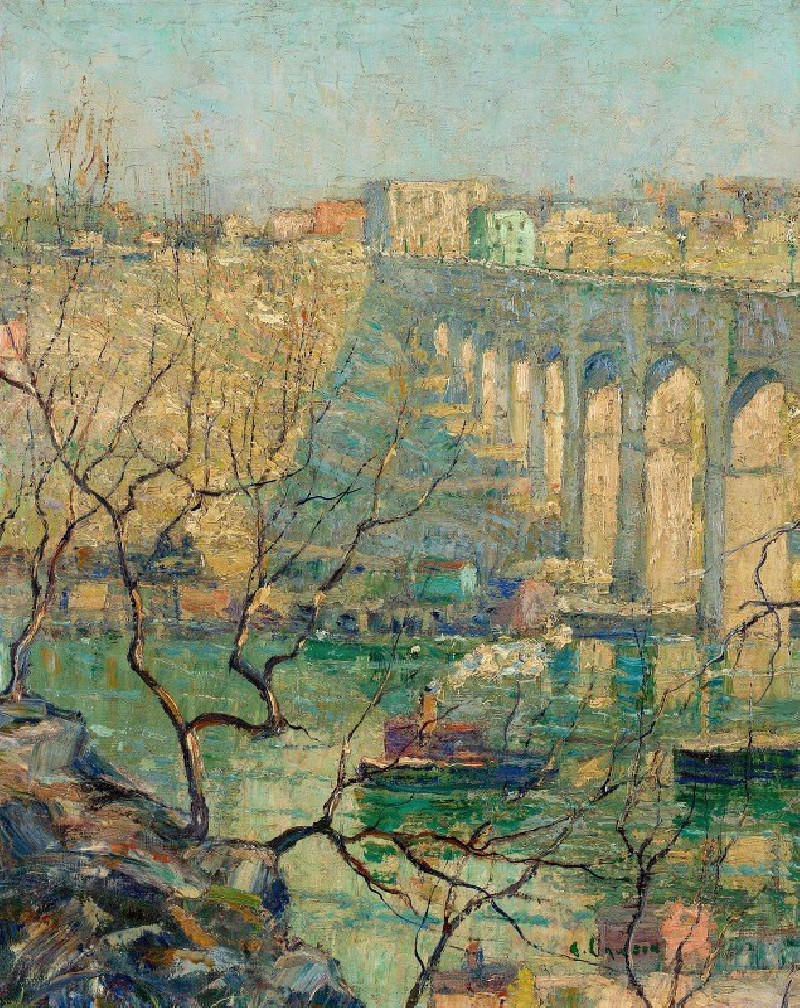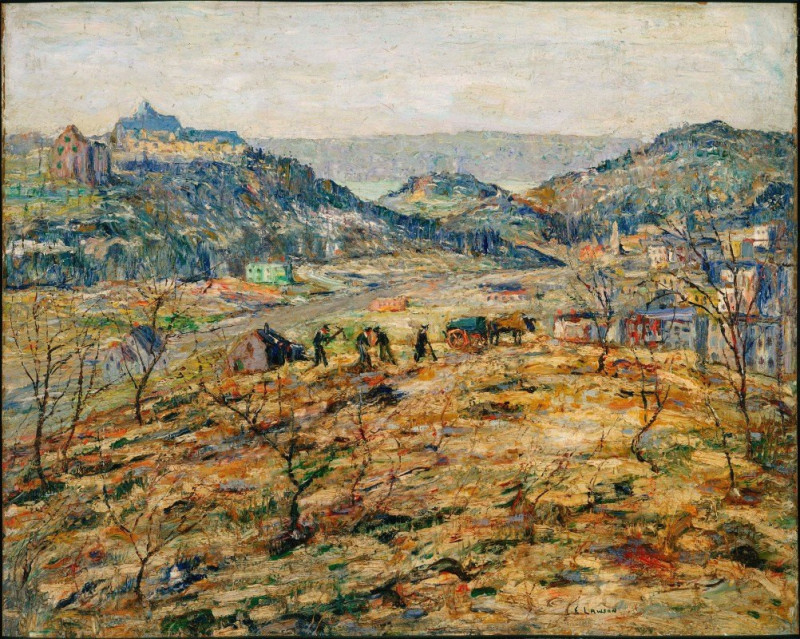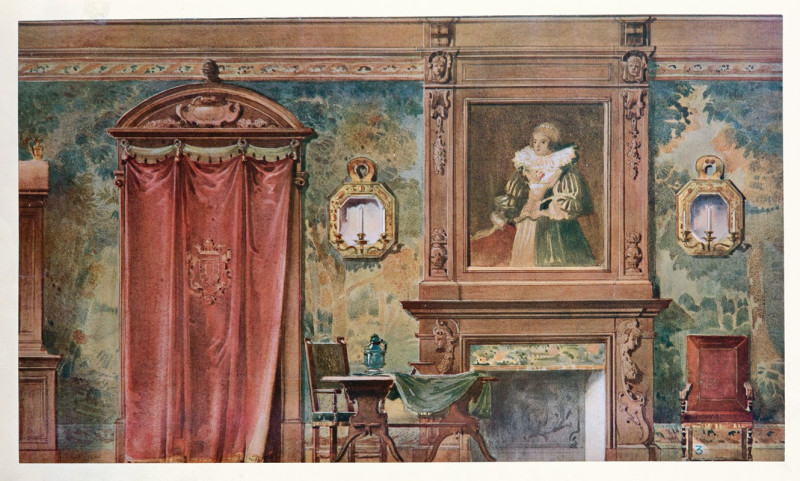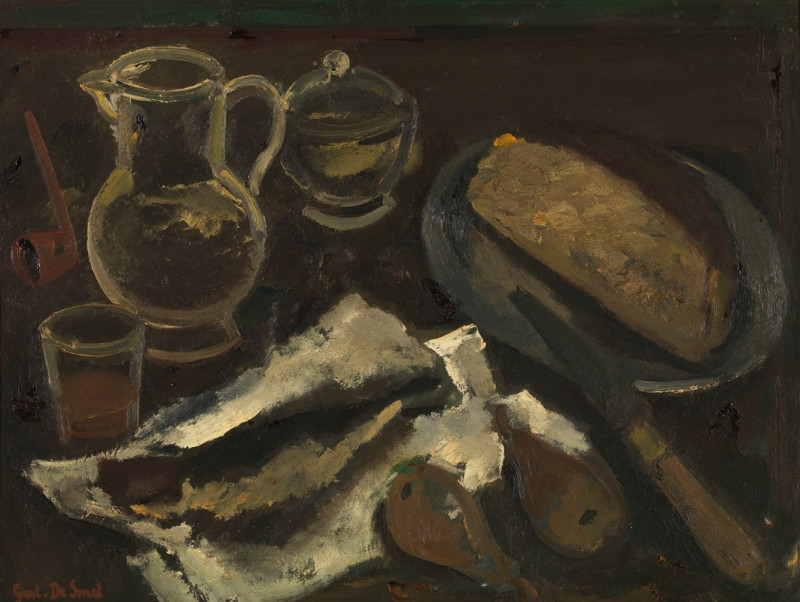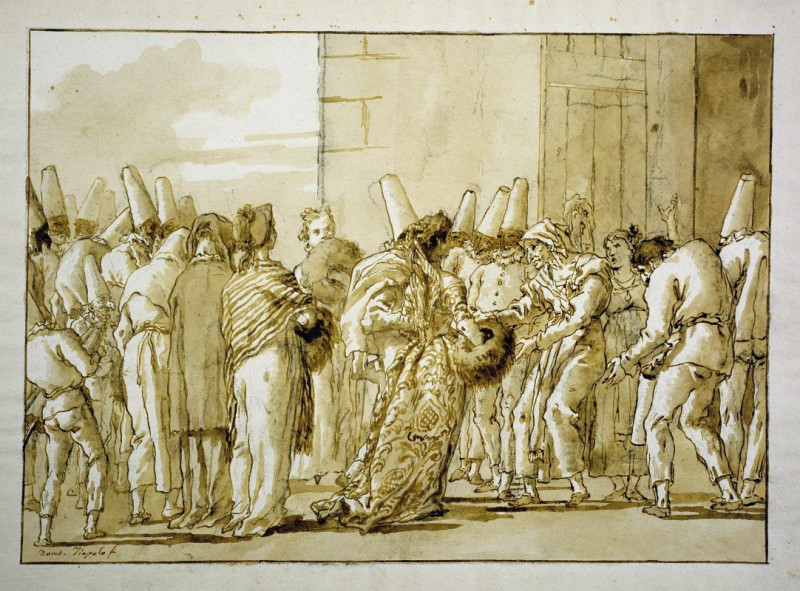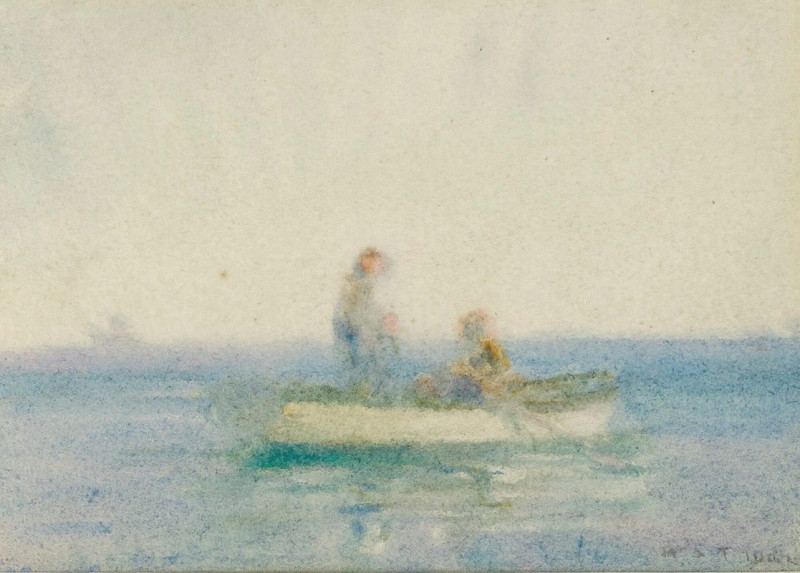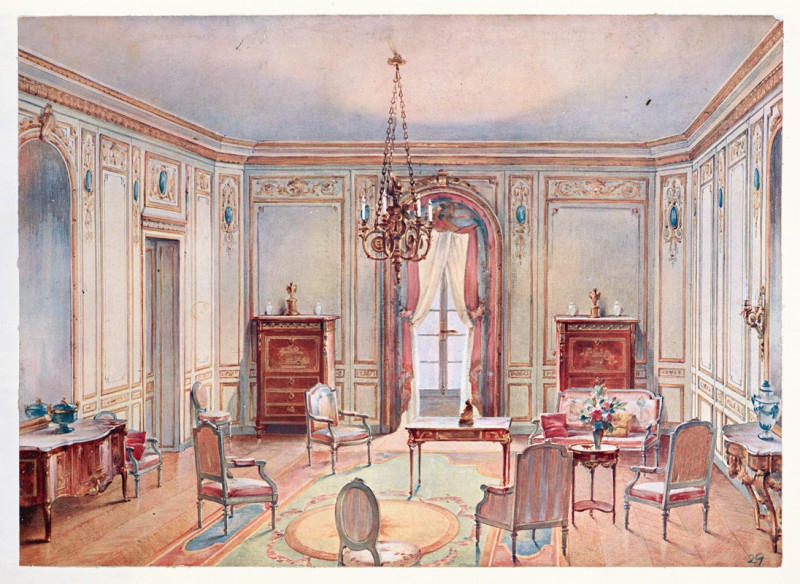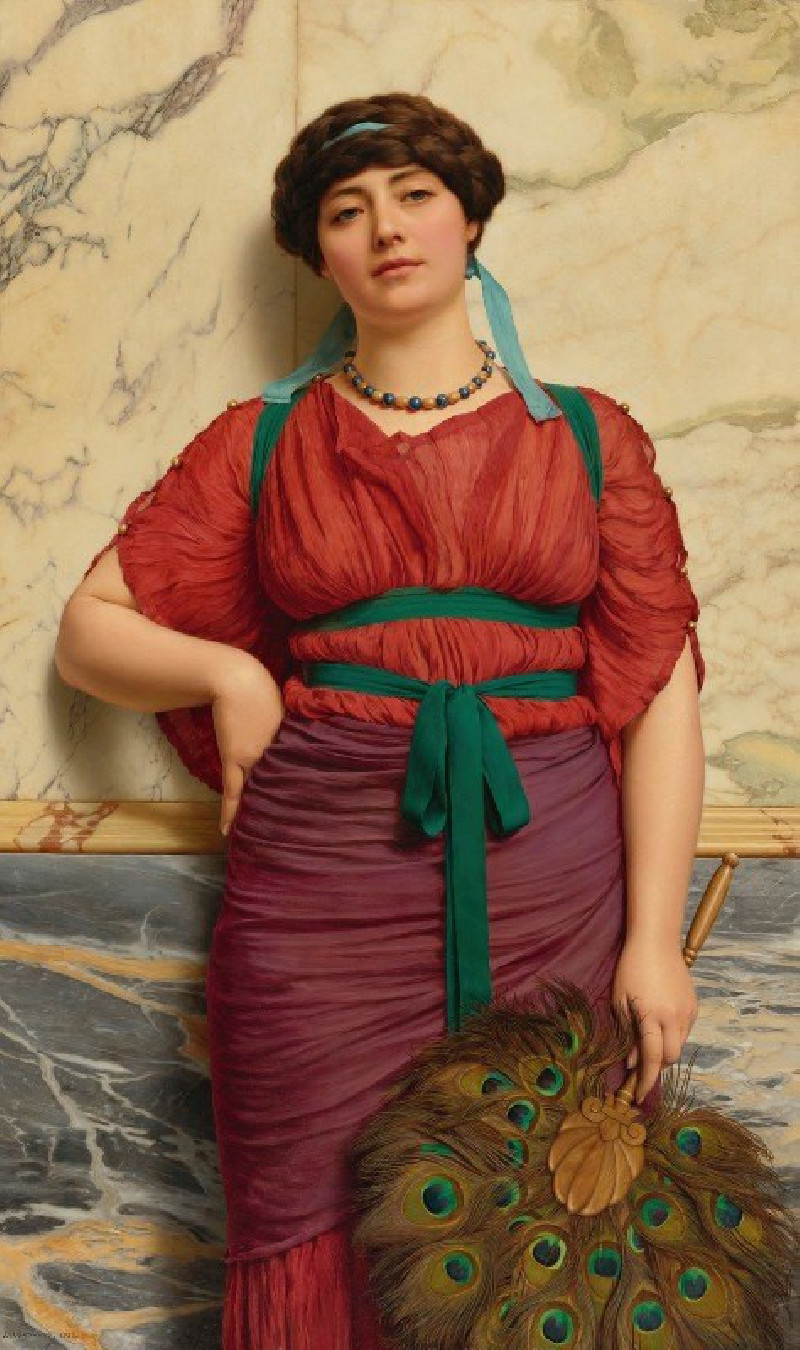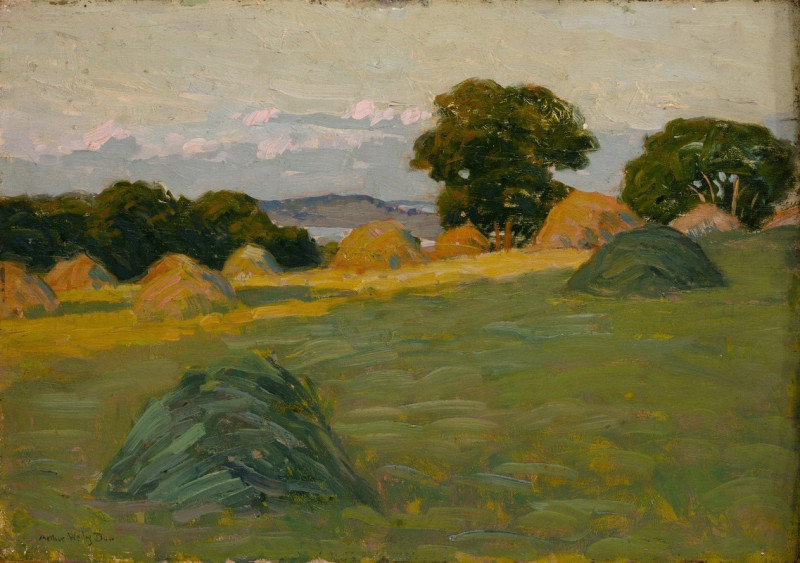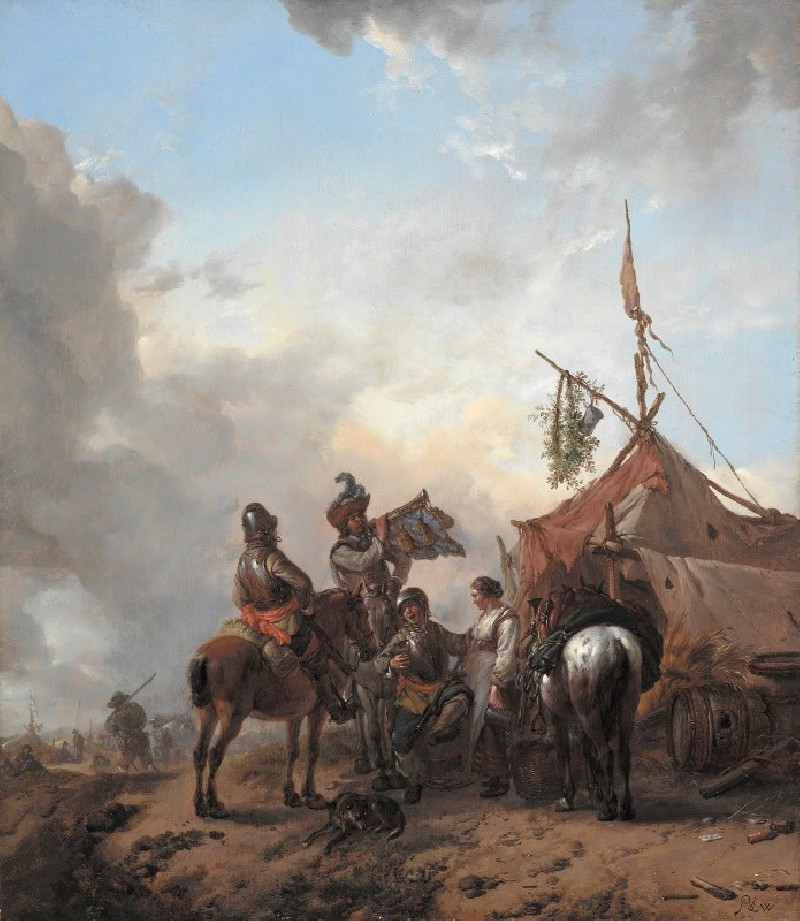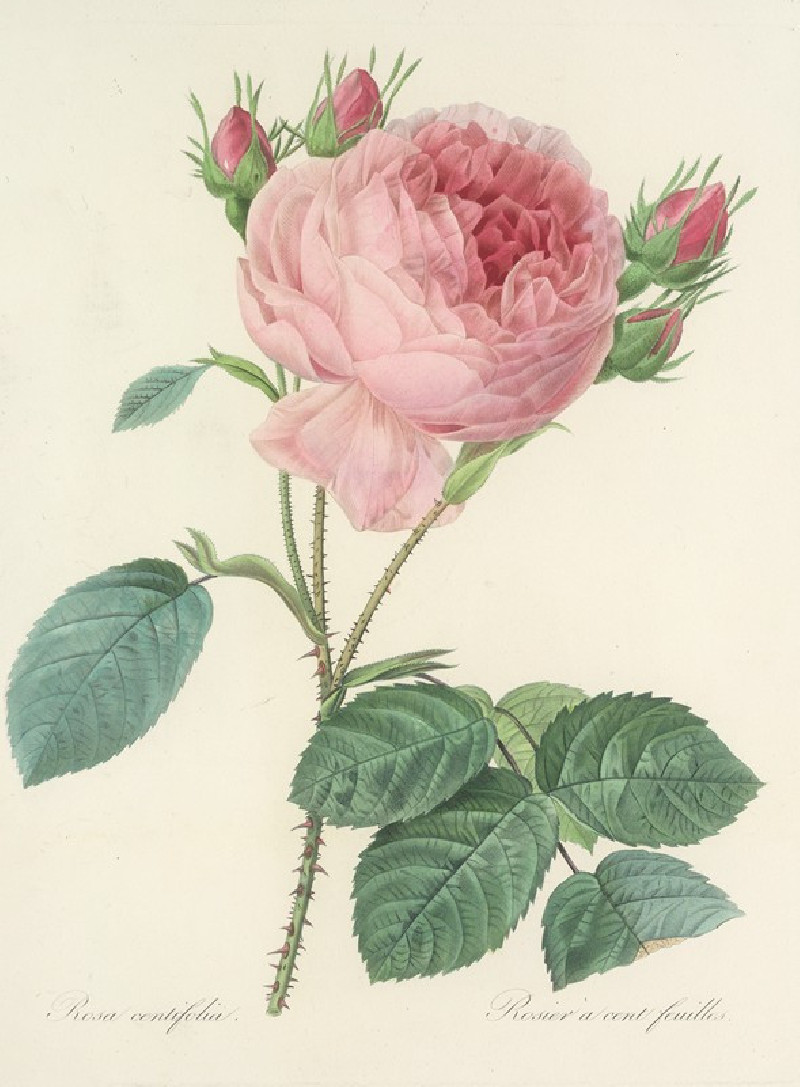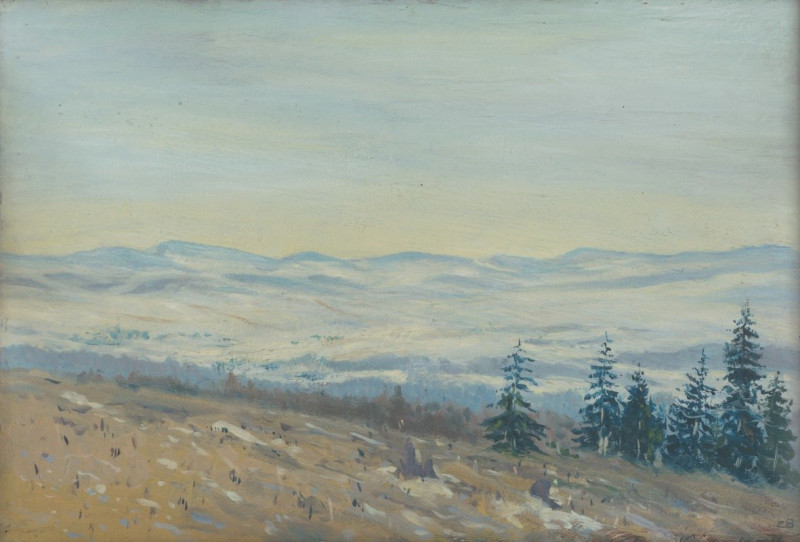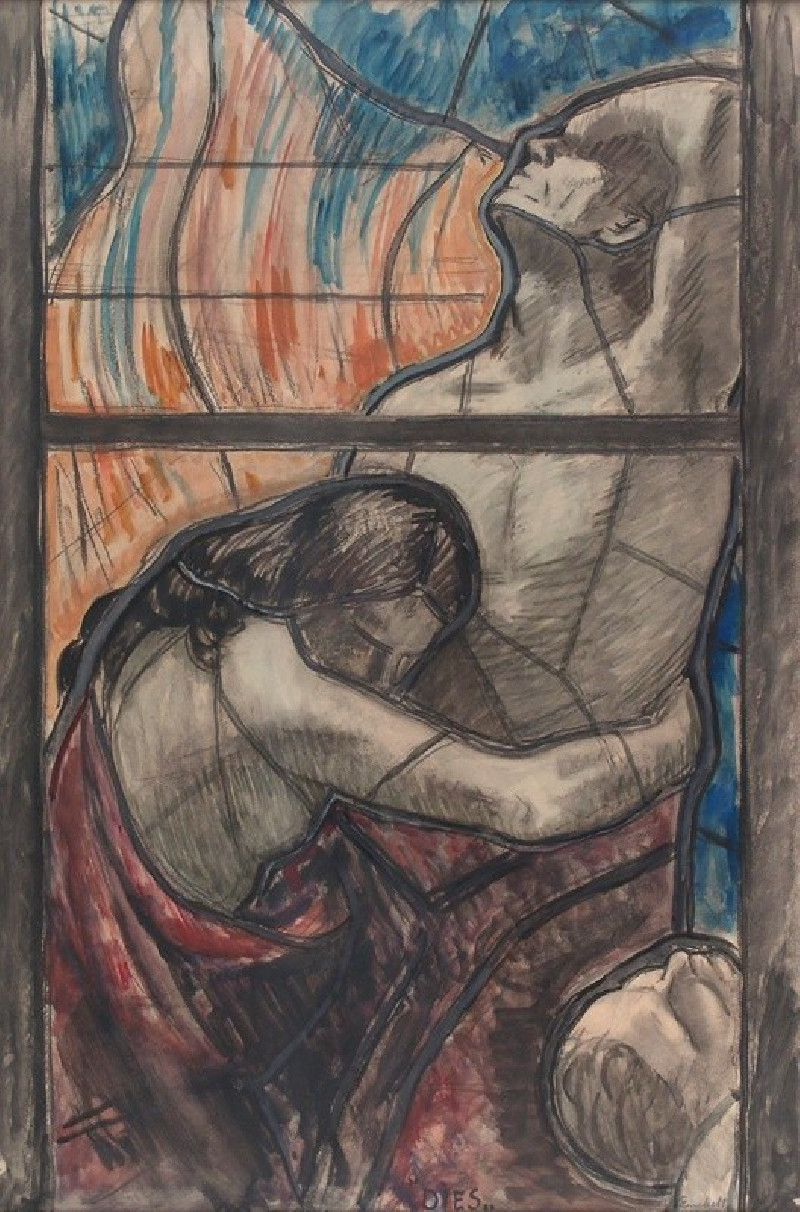Gold Mining, Cripple Creek (1929)
Technique: Giclée quality print
Recommended by our customers
More about this artwork
"Gold Mining, Cripple Creek" is a striking landscape painting by American artist Ernest Lawson, created in 1929. The canvas captures a vibrant and textured view of Cripple Creek, a renowned gold mining town in Colorado.Ernest Lawson, celebrated for his Impressionist technique, infuses this artwork with dynamic brushstrokes and an enriching palette, bringing to life the rugged terrain of the mining district. The painting features undulating hills dotted with mining structures including shafts, mills, and scattered houses, all set under a vast, lively sky that suggests the continuous buzz of activity and the harsh, enduring conditions of the site.The use of thick impasto and a rich color scheme enhances the depth and texture, making the landscape seem both chaotic and harmonious. Through this artwork, Lawson not only chronicles an essential chapter in America's industrial saga but also elevates it into a visual celebration of human endeavor against nature’s backdrop.
Delivery
Returns
Ernest Lawson (March 22, 1873 – December 18, 1939) was a Canadian-American painter and exhibited his work at the Canadian Art Club and as a member of the American group The Eight, artists who formed a loose association in 1908 to protest the narrowness of taste and restrictive exhibition policies of the conservative, powerful National Academy of Design. Though Lawson was primarily a landscape painter, he also painted a small number of realistic urban scenes. His painting style is heavily influenced by the art of John Henry Twachtman, J. Alden Weir, and Alfred Sisley. Though considered a Canadian-American Impressionist, Lawson falls stylistically between Impressionism and realism.



